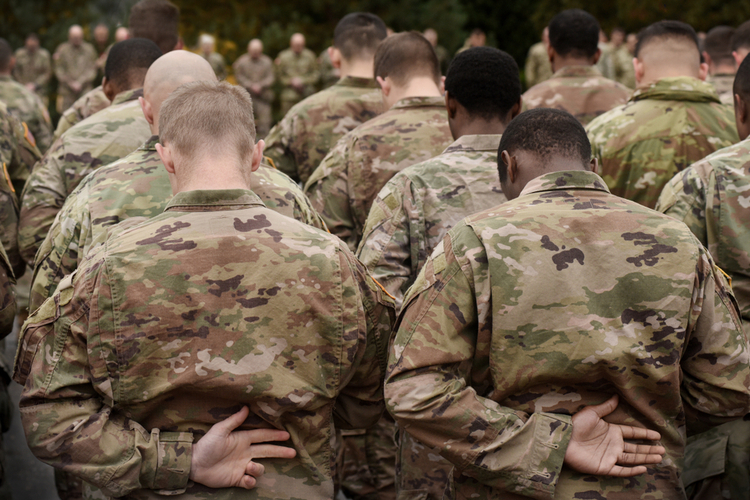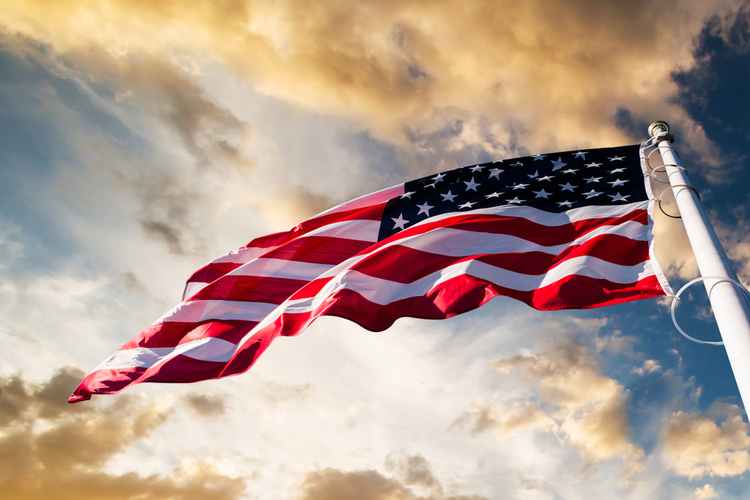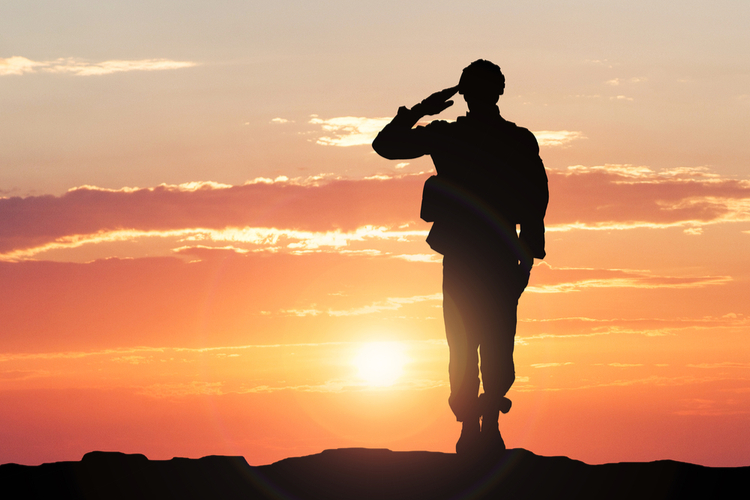The Significance of 22 On Veteran’s Day: How Cannabis May Help Those Who’ve Served
Vets belong to a special class: Those who voluntarily choose to serve their country. This Veteran’s Day—and every day—we urge you to keep this in mind.
But our society doesn’t always repay our veterans. Because they may be plagued by serious mental health disorders like PTSD at a far higher rate than the rest of the population, suicide is an epidemic among vets. How bad is it? In 2012, the Department of Veterans Affairs Mental Health Services Suicide Prevention Program determined that each day, 22 veterans die by suicide in the United States.
We feel that’s a tragic and unacceptable figure. And we also believe that medical cannabis may reduce that number by offering relief to those living with PTSD and other qualifying psychiatric disorders.
The Challenge of PTSD
The military offers its service members so much: A sense of purpose and achievement; valuable life skills; a camaraderie that often lasts a lifetime.
But the little-acknowledged truth is that for many veterans, the adjustment back to civilian life—especially after a deployment to a combat zone—is far more challenging than they anticipate.
PTSD—the acronym for Post-Traumatic Stress Disorder—is one of the most common psychiatric disorders in the world. In the United States, about 7 or 8 out of every 100 people (or 7-8% of the population) will have PTSD at some point in their lives. But according to some studies, as many as 20 – 30% of veterans may suffer from this serious disorder.
DSM-5 Criteria for PTSD Diagnosis
The current Diagnostic and Statistical Manual of Mental Disorders (DSM-5) sets forth the criteria that need to be met for a PTSD diagnosis. If you believe you may be living with PTSD, please visit a mental health professional.
The following criteria for PTSD diagnosis are for educational purposes. Be sure to speak with a mental health professional to learn more.
- A. Exposure to actual or threatened death, serious injury, or sexual violence in one (or more) of the following ways:
- 1. Directly experiencing the traumatic event(s).
- 2. Witnessing, in person, the event(s) as it occurred to others.
- 3. Learning that the traumatic event(s) occurred to a close family member or close friend. In cases of actual or threatened death of a family member or friend, the event(s) must have been violent or accidental.
- 4. Experiencing repeated or extreme exposure to aversive details of the traumatic event(s) (e.g., first responders collecting human remains; police officers repeatedly exposed to details of child abuse). (Note: Criterion A4 does not apply to exposure through electronic media, television, movies, or pictures, unless this exposure is work related.)
- B. Presence of one (or more) of the following intrusion symptoms associated with the traumatic event(s), beginning after the traumatic event(s) occurred:
- 1. Recurrent, involuntary, and intrusive distressing memories of the traumatic event(s).
- 2. Recurrent distressing dreams in which the content and/or affect of the dream are related to the traumatic event(s).
- 3. Dissociative reactions (e.g., flashbacks) in which the individual feels or acts as if the traumatic event(s) were recurring. (Such reactions may occur on a continuum, with the most extreme expression being a complete loss of awareness of present surroundings.)
- 4. Intense or prolonged psychological distress at exposure to internal or external cues that symbolize or resemble an aspect of the traumatic event(s).
- 5. Marked physiological reactions to internal or external cues that symbolize or resemble an aspect of the traumatic event(s).
- C. Persistent avoidance of stimuli associated with the traumatic event(s), beginning after the traumatic event(s) occurred, as evidenced by one or both of the following:
- 1. Avoidance of or efforts to avoid distressing memories, thoughts, or feelings about or closely associated with the traumatic event(s).
- 2. Avoidance of or efforts to avoid external reminders (people, places, conversations, activities, objects, situations) that arouse distressing memories, thoughts, or feelings about or closely associated with the traumatic event(s).
- D. Negative alterations in cognitions and mood associated with the traumatic event(s), beginning or worsening after the traumatic event(s) occurred, as evidenced by two (or more) of the following:
- 1. Inability to remember an important aspect of the traumatic event(s) (typically due to dissociative amnesia, and not to other factors such as head injury, alcohol, or drugs).
- 2. Persistent and exaggerated negative beliefs or expectations about oneself, others, or the world (e.g., “I am bad,” “No one can be trusted,” “The world is completely dangerous,” “My whole nervous system is permanently ruined”).
- 3. Persistent, distorted cognitions about the cause or consequences of the traumatic event(s) that lead the individual to blame himself/herself or others.
- 4. Persistent negative emotional state (e.g., fear, horror, anger, guilt, or shame).
- 5. Markedly diminished interest or participation in significant activities.
- 6. Feelings of detachment or estrangement from others.
- 7. Persistent inability to experience positive emotions (e.g., inability to experience happiness, satisfaction, or loving feelings).
- E. Marked alterations in arousal and reactivity associated with the traumatic event(s), beginning or worsening after the traumatic event(s) occurred, as evidenced by two (or more) of the following:
- 1. Irritable behavior and angry outbursts (with little or no provocation), typically expressed as verbal or physical aggression toward people or objects.
- 2. Reckless or self-destructive behavior.
- 3. Hypervigilance.
- 4. Exaggerated startle response.
- 5. Problems with concentration.
- 6. Sleep disturbance (e.g., difficulty falling or staying asleep or restless sleep).
- F. Duration of the disturbance (Criteria B, C, D and E) is more than 1 month.
- G. The disturbance causes clinically significant distress or impairment in social, occupational, or other important areas of functioning.

Veteran Suicide: Cannabis Fights Back
The growing acceptance of medical cannabis has helped bring relief to countless veterans who live with disorders like PTSD, anxiety, insomnia, and other disorders.
Cannabis helps us manage the symptoms of PTSD in several ways. The cannabinoids and terpenes in cannabis work closely with one of our body’s main regulatory networks, the Endocannabinoid System.
In one study, researchers investigating the anxiety-reducing role of the cannabinoid CBD found that it may aid in the regulation of memory function.
But cannabis may offer even more immediate help. In addition to addressing these longer-term memory issues, cannabis may offer short-term relief from severe symptoms of PTSD and may reduce the severe depression and suicidal ideation often associated with the disorder.
Used under careful medical supervision, cannabis has the potential to improve veterans’ quality of life.

Honoring Those Who Served
We’re confident that more research will help us better understand the ways cannabis may help people manage PTSD symptoms. And right now, we want to make it as easy as possible for veterans who seek relief to find it.
That’s why this Veteran’s Day 2020—Wednesday, November 11—we invite any former member of the armed services to partake in a 22% discount. Offer ends on Friday 13th, though we run year-long discounts for Vets. Ask your local dispensary for details.
And keep your eye on the number 22. We want to stay laser-focused on our ultimate goal: Reducing it all the way down to zero.

